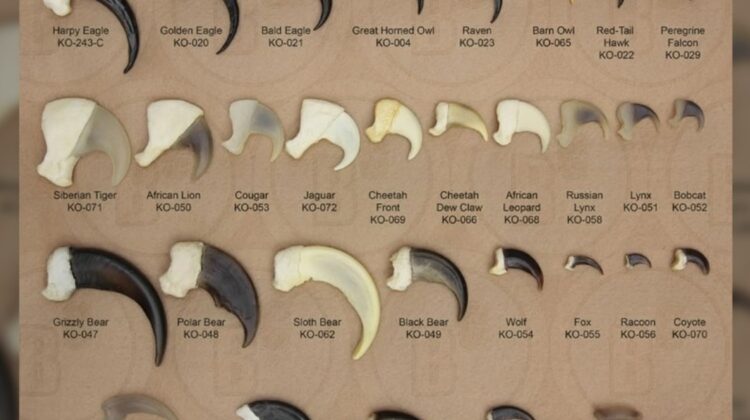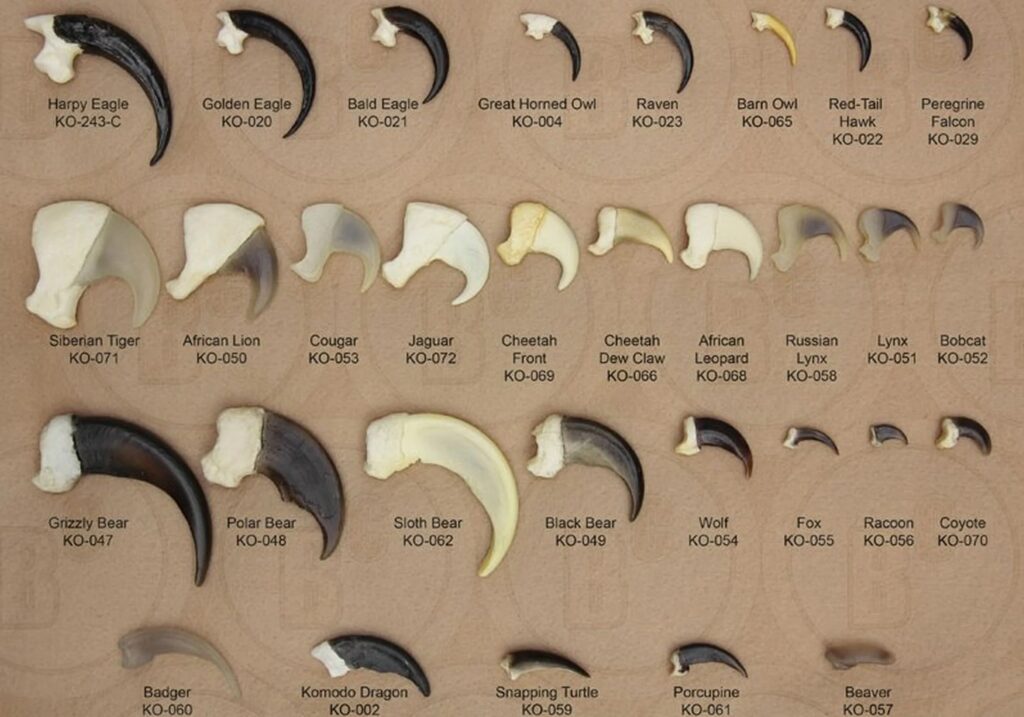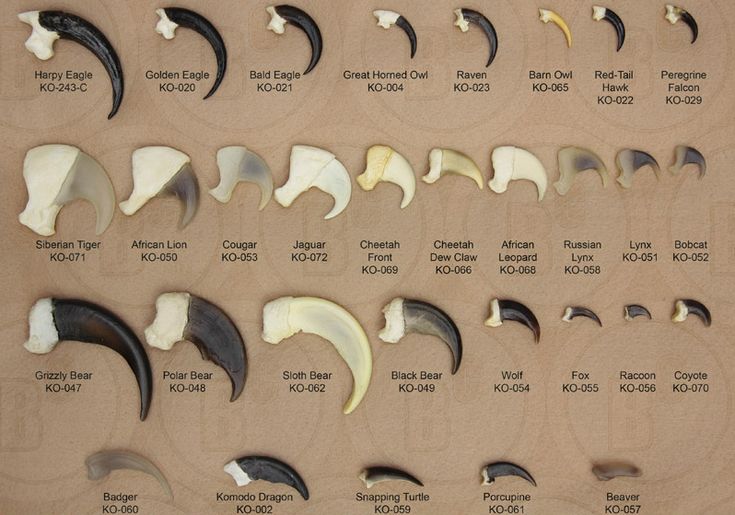
The animal kingdom is a vast and wondrous place, filled with creatures of all shapes and sizes. One of the most fascinating aspects of these creatures is their unique adaptations, which allow them to thrive in their respective habitats. Among these adaptations, claws and talons stand out as particularly intriguing, serving a variety of purposes from hunting and defense to climbing and digging.
Bone Clones: A Treasure Trove of Specimens
For those seeking to delve deeper into the world of claws and talons, the Bone Clones company offers a remarkable collection of 31 specimens. This comprehensive set includes examples from a wide range of animals, both living and extinct, providing invaluable insights into the diversity and functionality of these appendages.

The Diversity of Claws and Talons
From the razor-sharp talons of a raptor to the powerful claws of a bear, the animal kingdom showcases a stunning array of claw and talon variations. Each type is uniquely adapted to the animal’s lifestyle and needs. For instance, the curved and pointed talons of a bird of prey are ideal for grasping and tearing prey, while the long and sturdy claws of a primate are well-suited for climbing and grasping branches.
Functional Differences
Beyond their physical appearance, claws and talons also exhibit significant functional differences. The sharpness and curvature of a talon can reveal a great deal about an animal’s hunting strategies. For example, the deeply curved talons of a raptor allow it to exert maximum pressure on its prey, ensuring a successful kill. On the other hand, the blunt and rounded claws of a herbivore are better suited for digging up roots or scraping bark.

Behavior and Diet
By studying the characteristics of claws and talons, scientists can also gain valuable insights into an animal’s behavior and diet. The size and shape of an animal’s claws can provide clues about its preferred food source and hunting methods. For instance, the long, sharp claws of a carnivore are indicative of a predatory lifestyle, while the shorter, sturdier claws of a herbivore suggest a diet based on plants.
Identification and Research
In addition to their functional significance, claws and talons can also be used as a tool for identification. By comparing the characteristics of an unknown claw or talon to those of known species, researchers can often determine the animal’s identity with a high degree of accuracy. This information is invaluable for studies on biodiversity, conservation, and evolutionary biology.

The Bone Clones collection of claws and talons offers a fascinating glimpse into the diverse and fascinating world of these remarkable appendages. By studying these specimens, we can gain a deeper appreciation for the incredible adaptations that have allowed animals to thrive in a wide range of environments. Whether you are a seasoned naturalist or simply curious about the natural world, the Bone Clones collection is sure to captivate and inform.

Leave a Reply